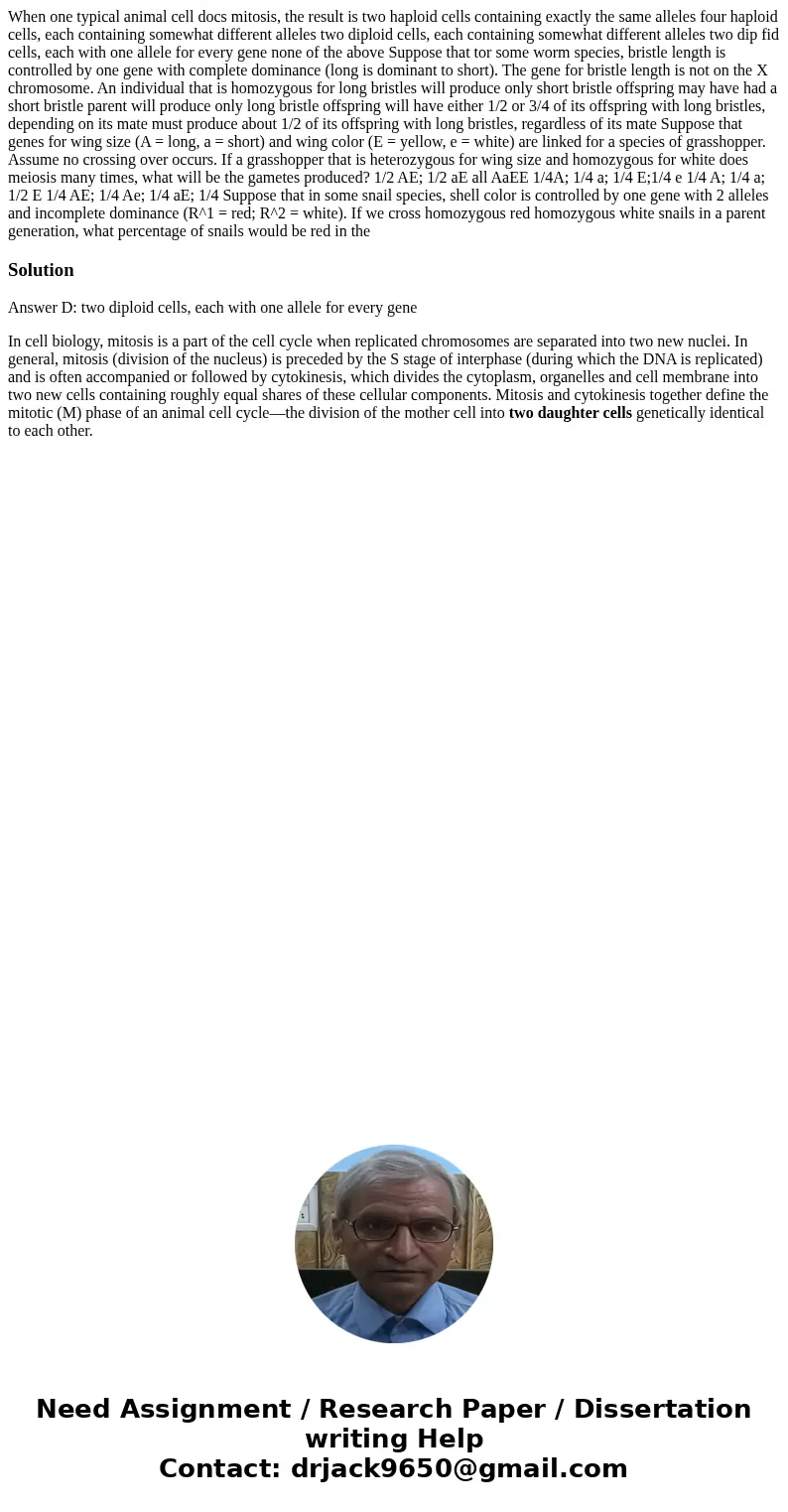When one typical animal cell docs mitosis the result is two
When one typical animal cell docs mitosis, the result is two haploid cells containing exactly the same alleles four haploid cells, each containing somewhat different alleles two diploid cells, each containing somewhat different alleles two dip fid cells, each with one allele for every gene none of the above Suppose that tor some worm species, bristle length is controlled by one gene with complete dominance (long is dominant to short). The gene for bristle length is not on the X chromosome. An individual that is homozygous for long bristles will produce only short bristle offspring may have had a short bristle parent will produce only long bristle offspring will have either 1/2 or 3/4 of its offspring with long bristles, depending on its mate must produce about 1/2 of its offspring with long bristles, regardless of its mate Suppose that genes for wing size (A = long, a = short) and wing color (E = yellow, e = white) are linked for a species of grasshopper. Assume no crossing over occurs. If a grasshopper that is heterozygous for wing size and homozygous for white does meiosis many times, what will be the gametes produced? 1/2 AE; 1/2 aE all AaEE 1/4A; 1/4 a; 1/4 E;1/4 e 1/4 A; 1/4 a; 1/2 E 1/4 AE; 1/4 Ae; 1/4 aE; 1/4 Suppose that in some snail species, shell color is controlled by one gene with 2 alleles and incomplete dominance (R^1 = red; R^2 = white). If we cross homozygous red homozygous white snails in a parent generation, what percentage of snails would be red in the
Solution
Answer D: two diploid cells, each with one allele for every gene
In cell biology, mitosis is a part of the cell cycle when replicated chromosomes are separated into two new nuclei. In general, mitosis (division of the nucleus) is preceded by the S stage of interphase (during which the DNA is replicated) and is often accompanied or followed by cytokinesis, which divides the cytoplasm, organelles and cell membrane into two new cells containing roughly equal shares of these cellular components. Mitosis and cytokinesis together define the mitotic (M) phase of an animal cell cycle—the division of the mother cell into two daughter cells genetically identical to each other.

 Homework Sourse
Homework Sourse